
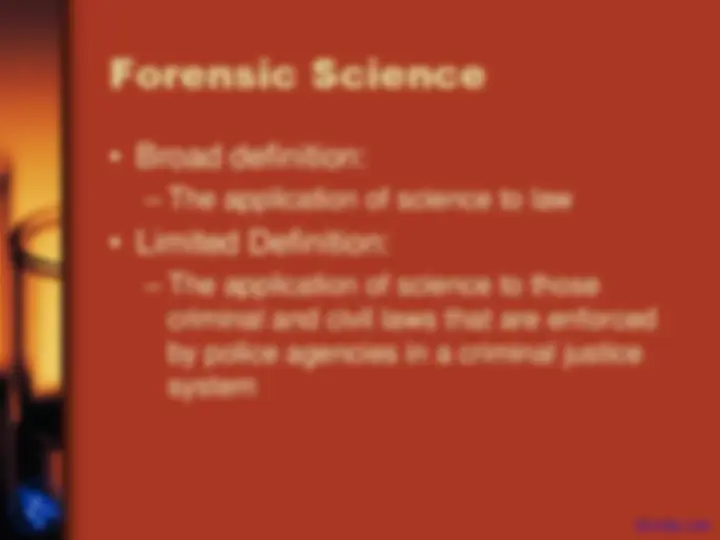
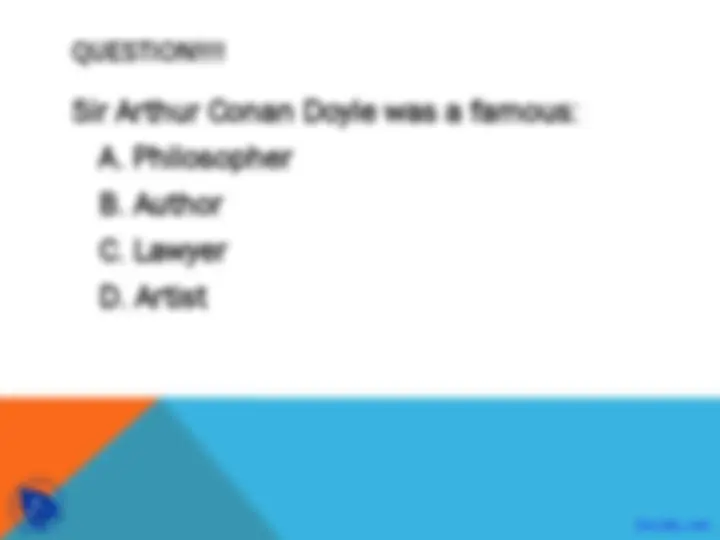
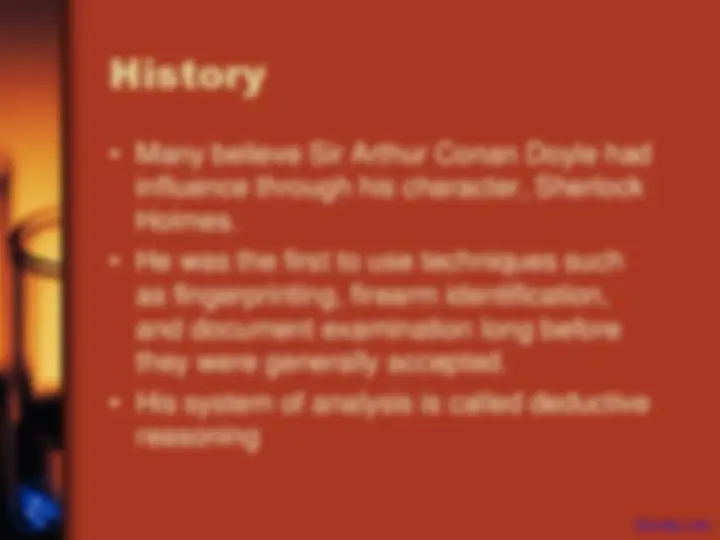
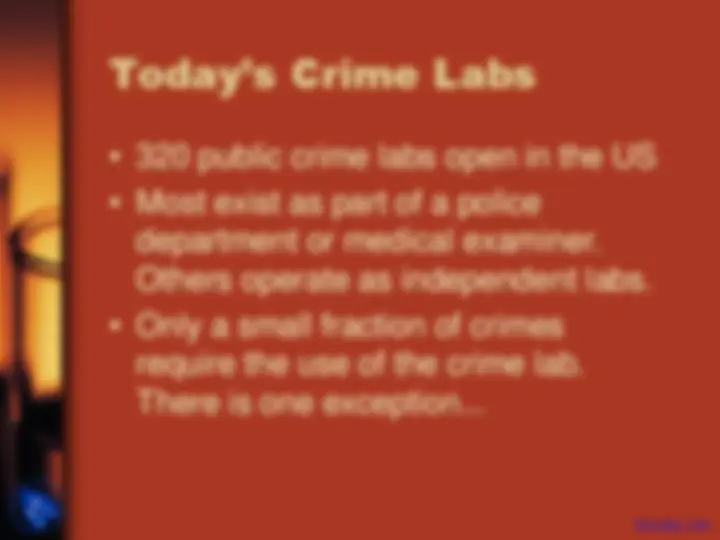

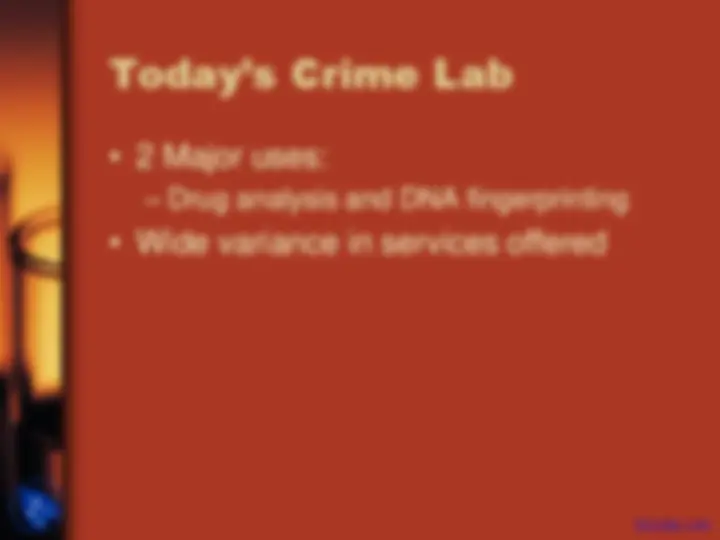
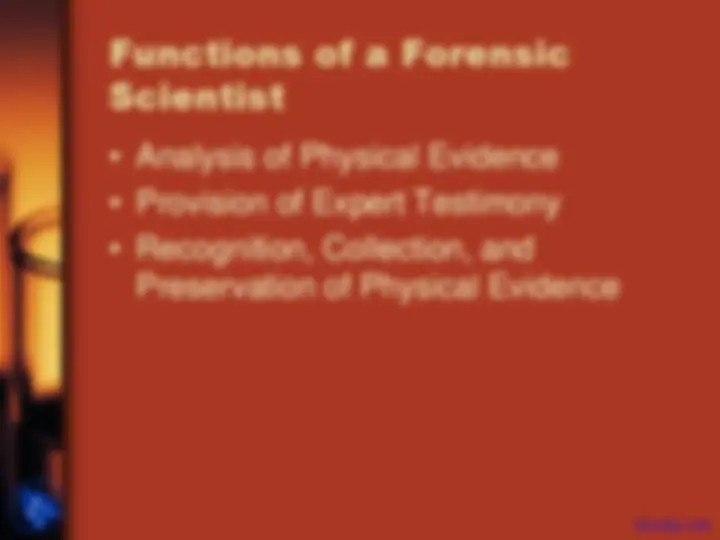
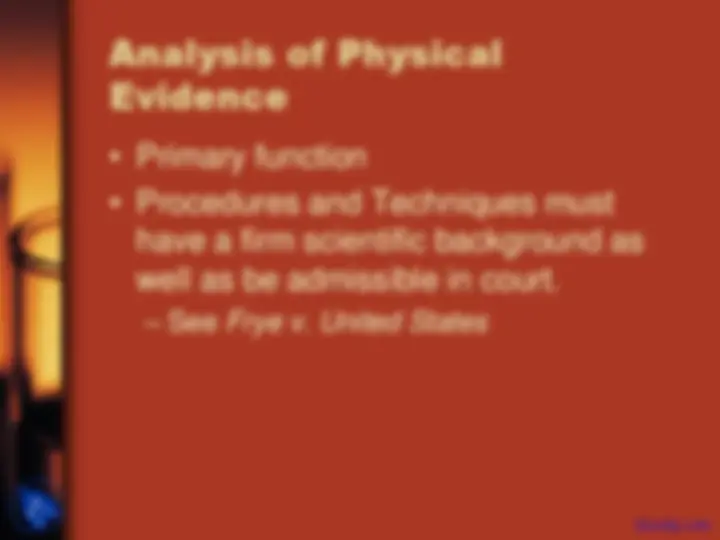

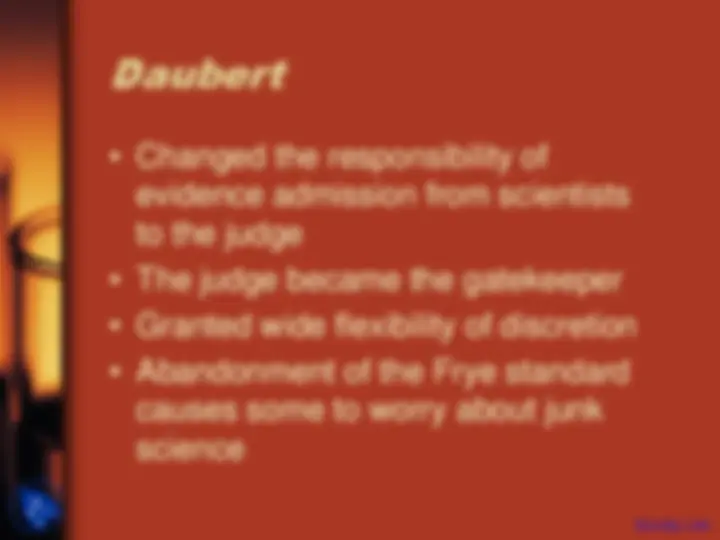
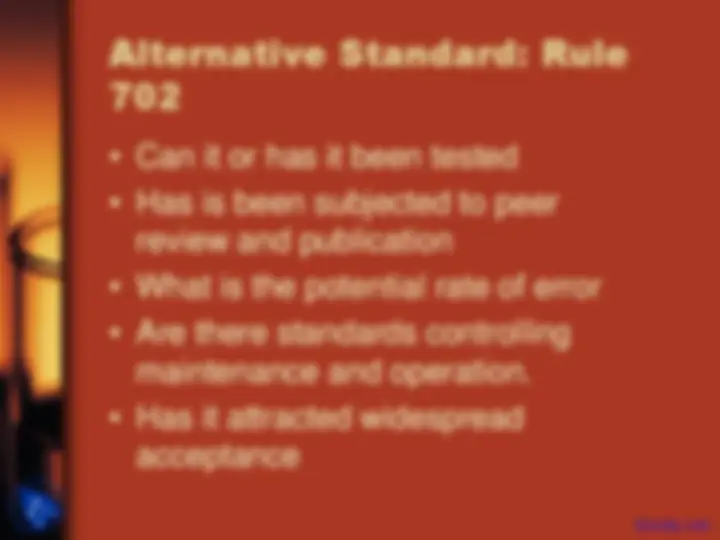
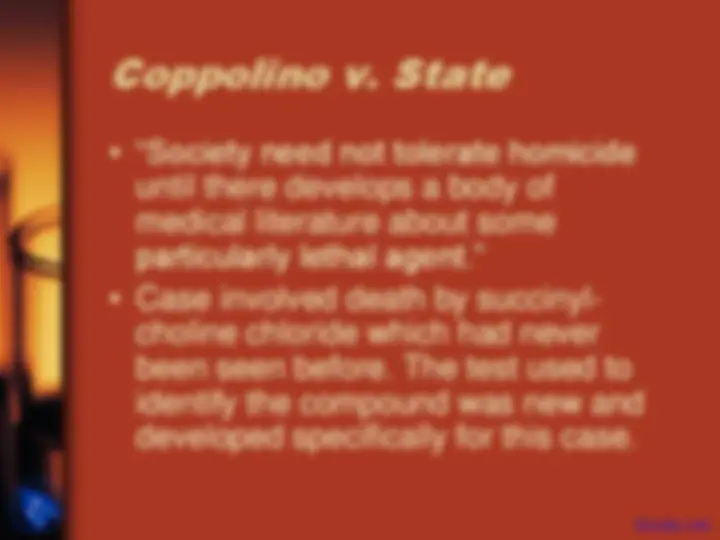
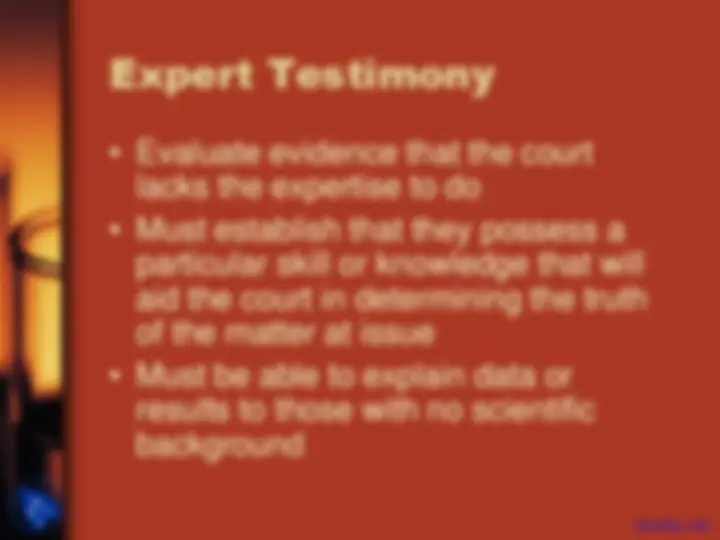

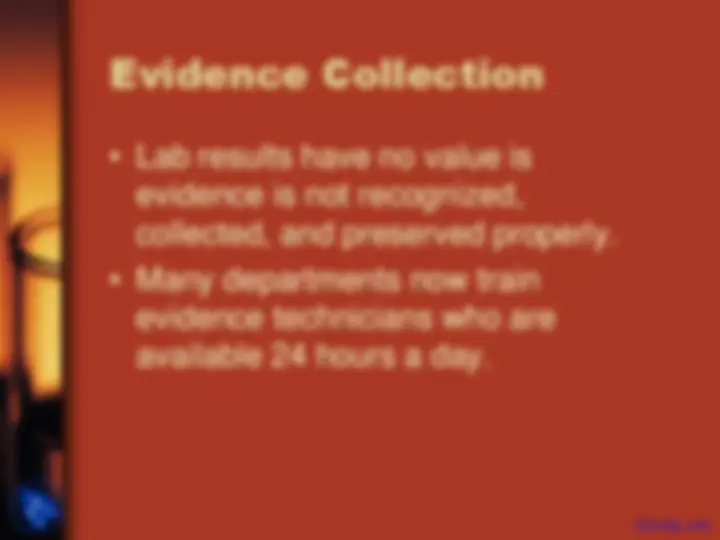
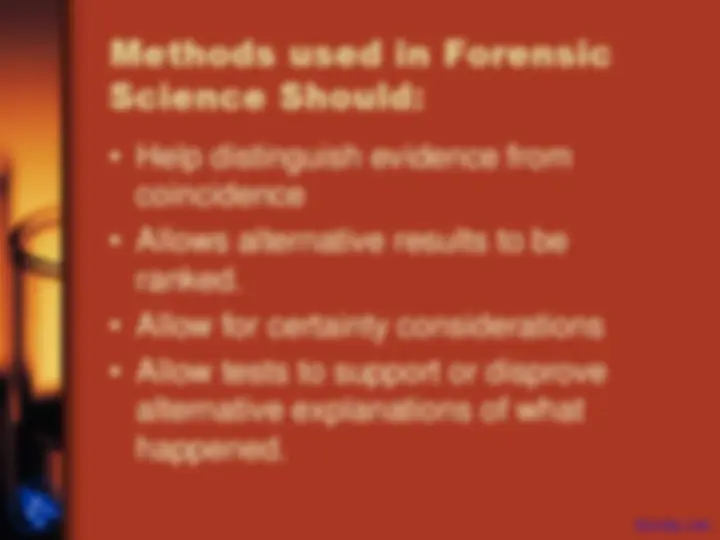
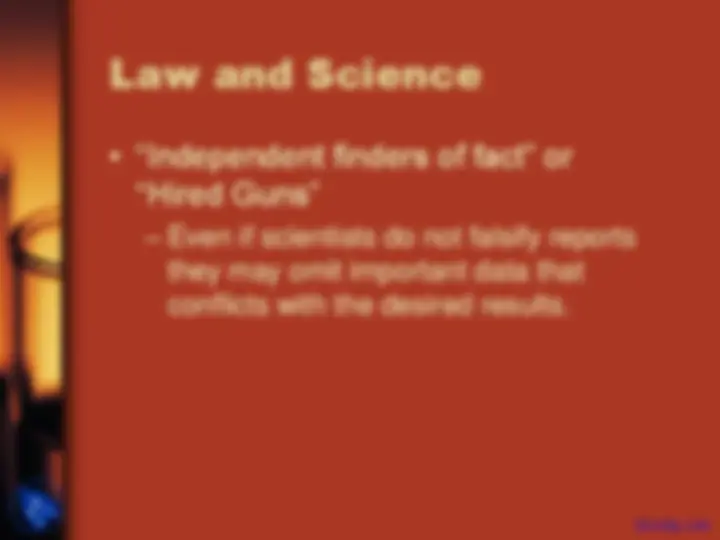
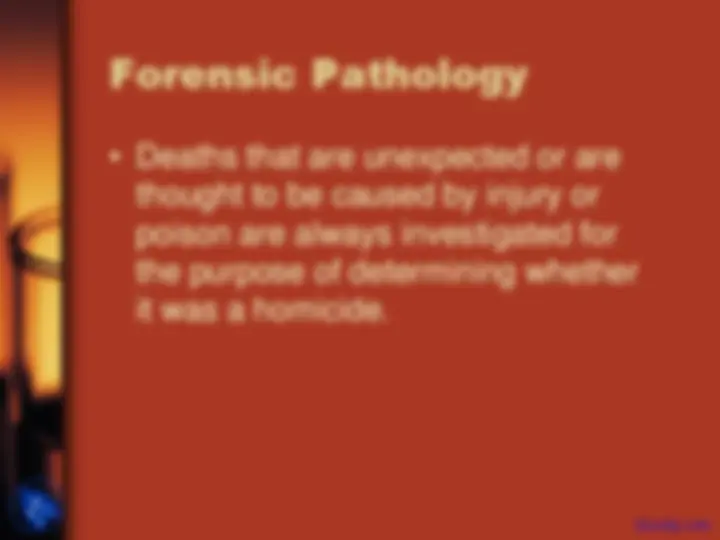
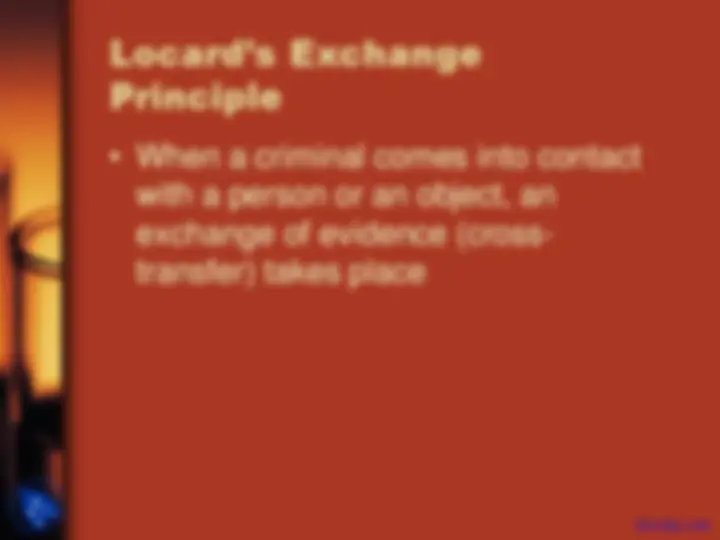
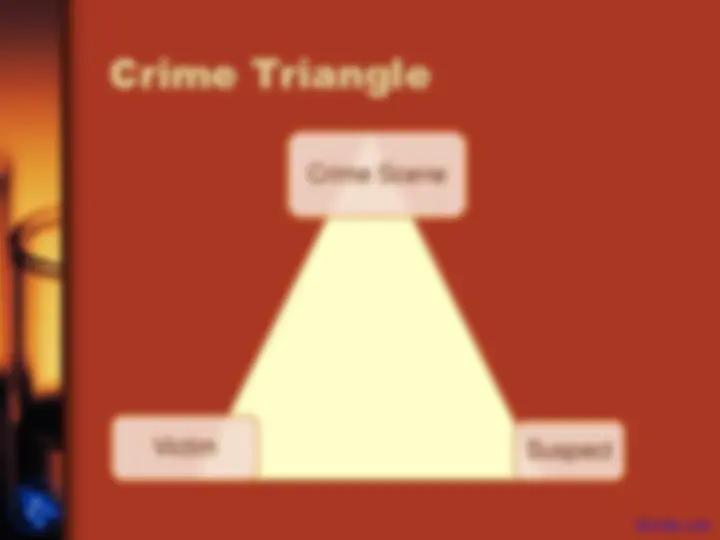
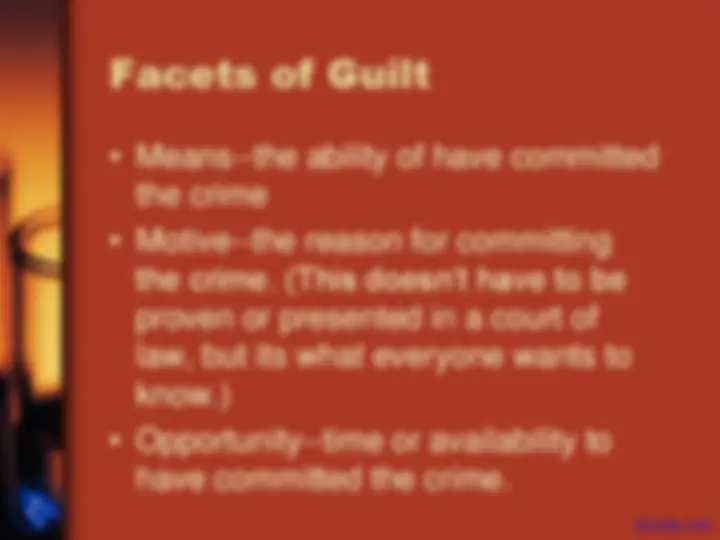



Study with the several resources on Docsity

Earn points by helping other students or get them with a premium plan


Prepare for your exams
Study with the several resources on Docsity

Earn points to download
Earn points by helping other students or get them with a premium plan
Community
Ask the community for help and clear up your study doubts
Discover the best universities in your country according to Docsity users
Free resources
Download our free guides on studying techniques, anxiety management strategies, and thesis advice from Docsity tutors
Forensic science (often shortened to forensics) is the application of a broad spectrum of sciences and technologies to investigate and establish facts of interest in relation to criminal or civil law. This lecture includes: Introduction, Directly Inflicted, Attorney General Ramsey Clark, Broad Definition, Limited Definition, Police Agencies, Criminal Justice, Philosopher, Author, Lawyer
Typology: Slides
1 / 30

This page cannot be seen from the preview
Don't miss anything!























Chapter One
QUESTION!!!!
Sir Arthur Conan Doyle was a famous:
A. Philosopher B. Author C. Lawyer D. Artist
QUESTION!!!
Which city had the first forensics lab?
A. New York
B. Los Angeles
C. Topeka
D.Miami